
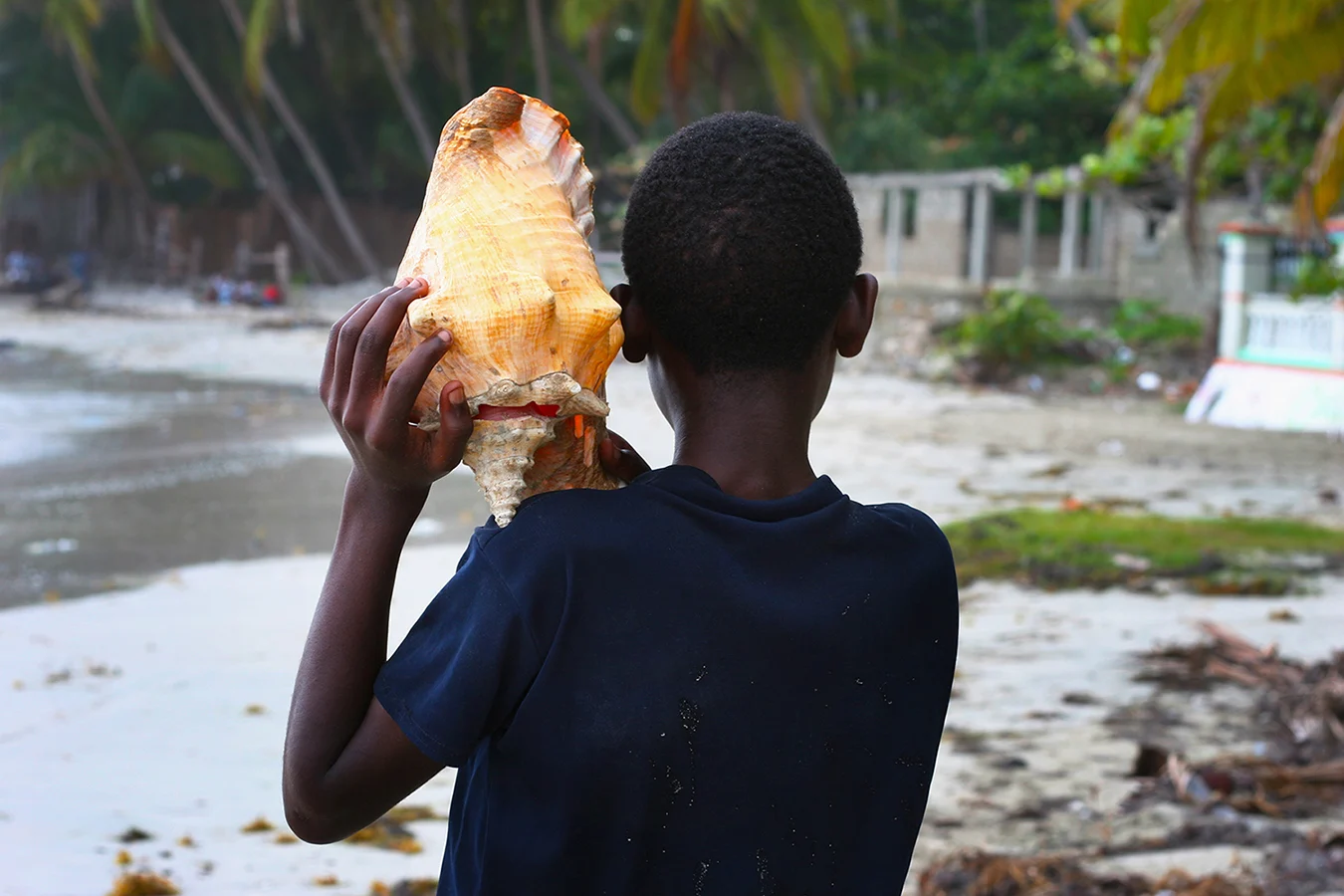
It was around 2010 that Jean Paul Saint Fleur first wanted to become a photographer, but lacking access to a camera, he had to bide his time before trying his hand at it. His dream became a reality in 2014, when he was invited to take part in a workshop with the collective FotoKonbit – and he’s been learning the ropes ever since. He now turns his own lens on the beauty of day-to-day life in his beloved Haiti, and captures the fascinating characters he’s grown up surrounded by. Here, he tells Alex Kahl the stories behind some of his favorite shots so far.
Jean Paul Saint Fleur first had the urge to pick up a camera in 2010, when he saw a photographer working after an earthquake in Jacmel, one of the largest cities in Haiti. “I watched him and was intrigued by how he was looking at everything around him,” he says. “I was very young and didn’t think I’d ever have the opportunity to own a camera myself.” In 2014, Jean Paul was invited to take part in a workshop with FotoKonbit, a collective that teaches local Haitians the art of photography. The first photo he took was a portrait of a friend, and after some glowing feedback, he was ready to continue pursuing his dream. “Now everyone calls me ‘the photographer’ and that makes me proud every day,” he says, smiling.
In his work, Jean Paul is keen to show a more personal side to Haiti than outsiders might have been fed in global news. “In Haiti there are problems but there is also beauty everywhere,” he says. “That beauty is what I want to focus on.”
Jean Paul turns his lens to the everyday goings-on around him: Children playing, people working or simply the scenery. “I capture the things I believe in. Education, civic engagement, environmental protection and the beauty of human connections,” he says. “I am proud of our culture and history, and I want to be able to show other people the love I have for my country through my images.”
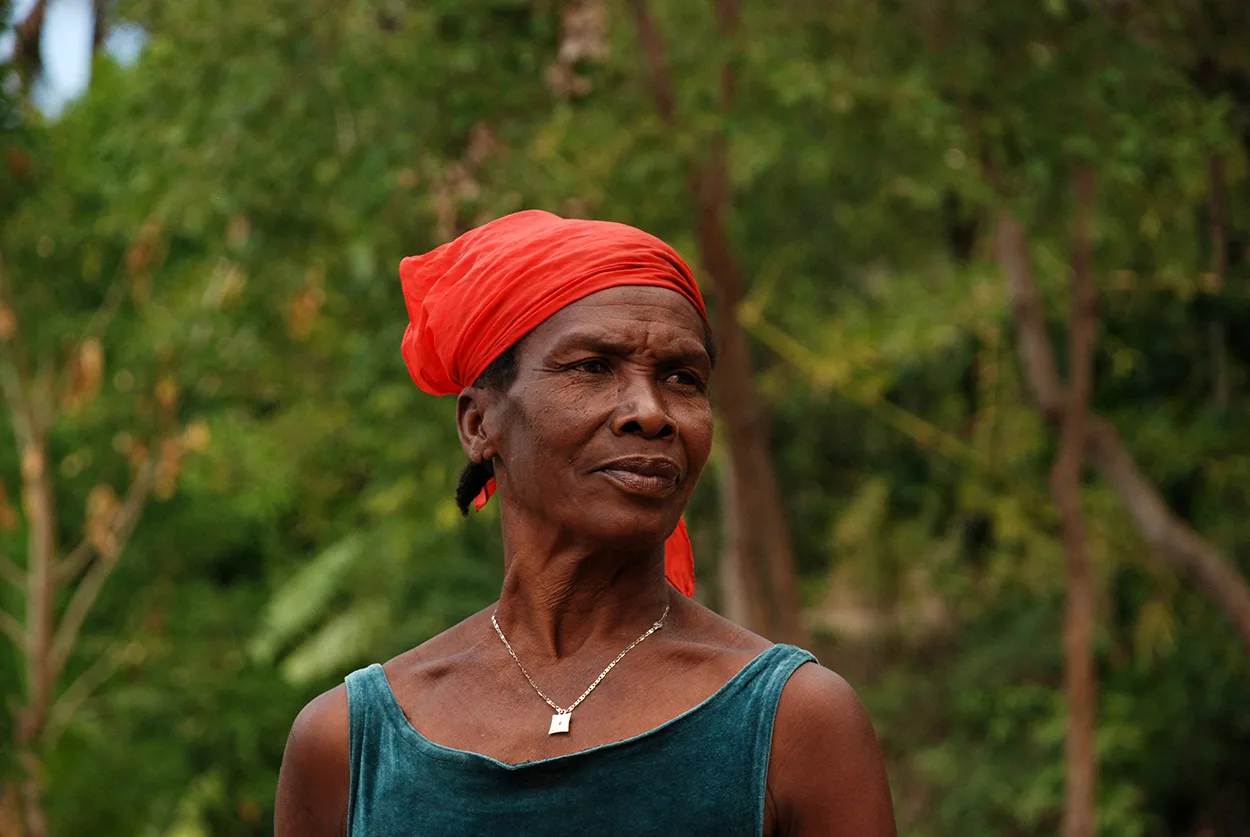
Problems exist in all countries, not just here. The beauty is what I want to focus on.

“This kid is part of a Carnival group in the city of Jacmel, and he uses his video camera as part of his performance. When people are passing by him during Carnival and he notices they don’t have very much energy, he pretends to film them, and this boosts their energy. It reminds me of how I feel when I take pictures. I want people to feel happy and energized after I photograph them.”
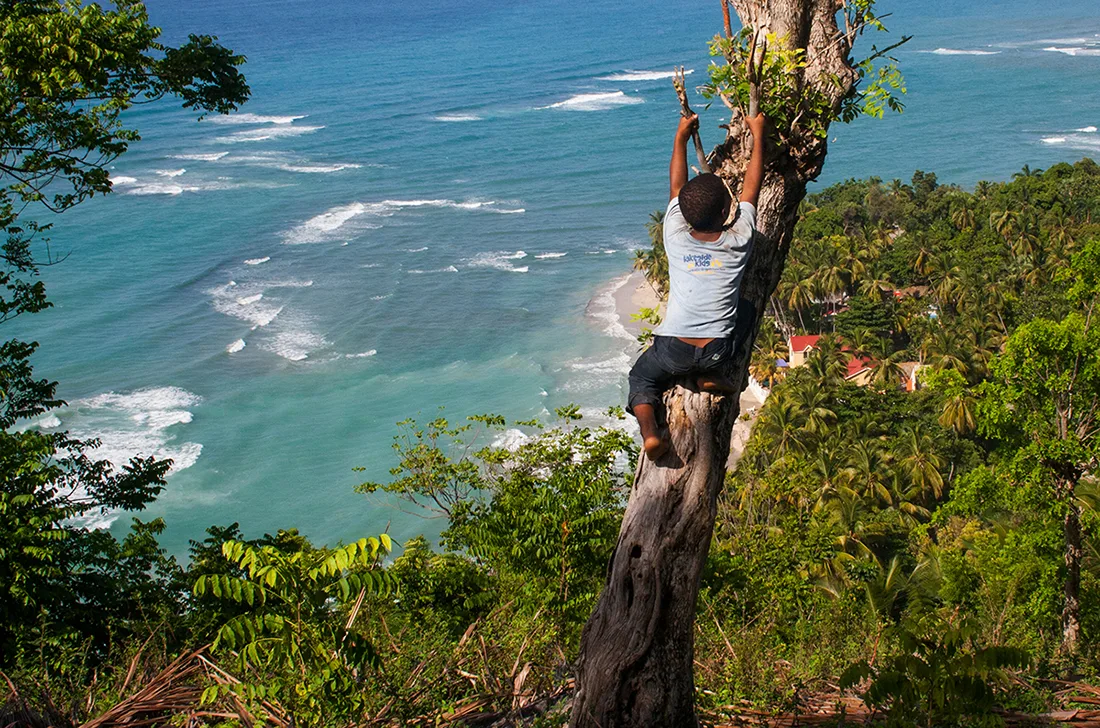
“This is the neighborhood I’m from in Cayes-Jacmel. I like this photo because it was one of the first photos I was happy with when I joined FotoKonbit. The boy was climbing up the tree to collect leaves to feed his goat. In the background, you can see the ocean and the beach where I’ve spent so much of my life. This photo shows the beauty of the place I’m from, and reminds me of my childhood.”

“This man was using his phone and laptop on a tap-tap that was headed to the town of Marigot. Tap-taps are the most common mode of transport in Haiti, and the owners usually paint them in bright colors and add their favorite messages. I like this picture because it shows the meeting point between tradition and technology.”
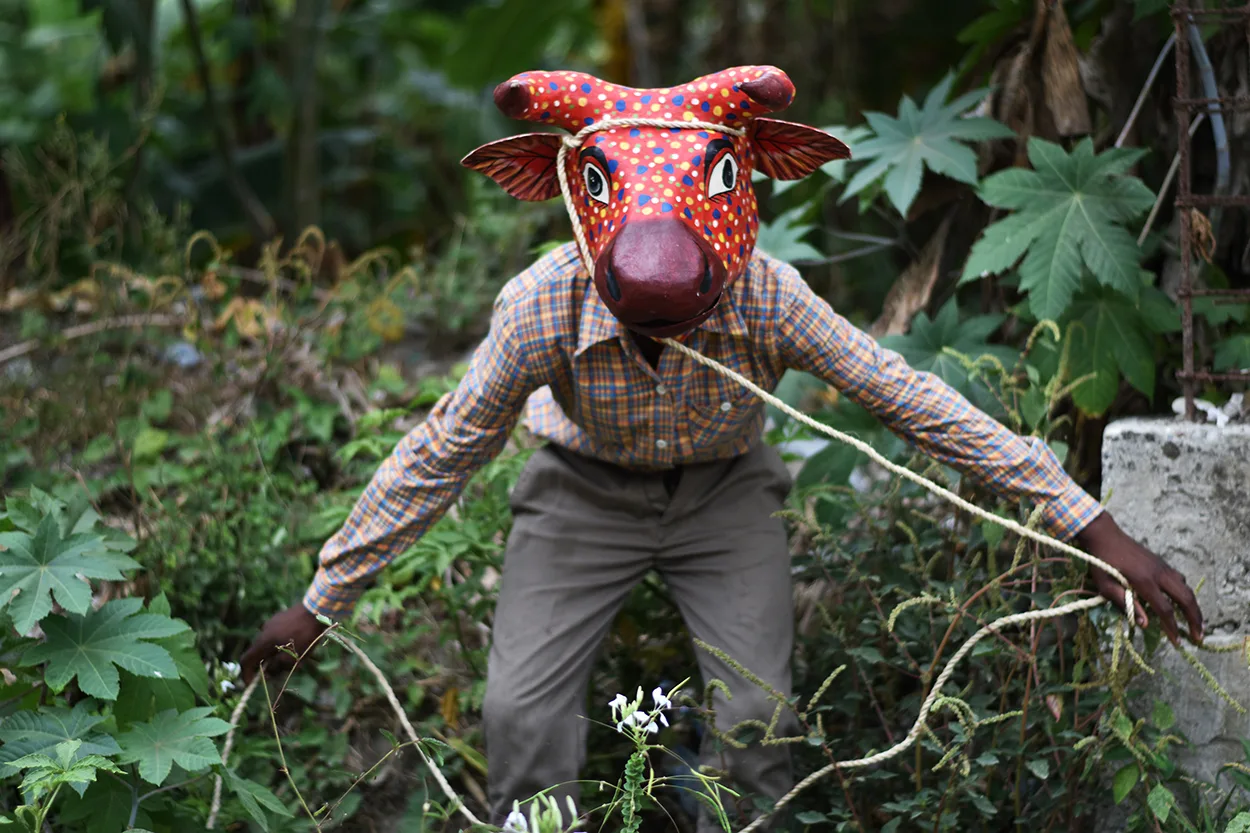
“I took this picture during Carnival in my neighborhood, which is about 30 minutes outside the city of Jacmel. This man made his mask with papier mâché, which is the traditional method in the area. People use their skills and creativity to express themselves during Carnival; you can pretend to be someone else for a day. This man expresses himself every year by standing in the bushes and greeting everybody while pretending to be a cow.”

“In my neighborhood there’s a little stream that has a water pool where people bathe, clean their motorcycles and wash their clothes. This boy, Ophelson, is a local kid I’ve known since he was a baby. I always see him bathing but the day I took this picture it was very hot. You can see how happy he was to cool down, and I can always feel refreshed when I see this photo!”
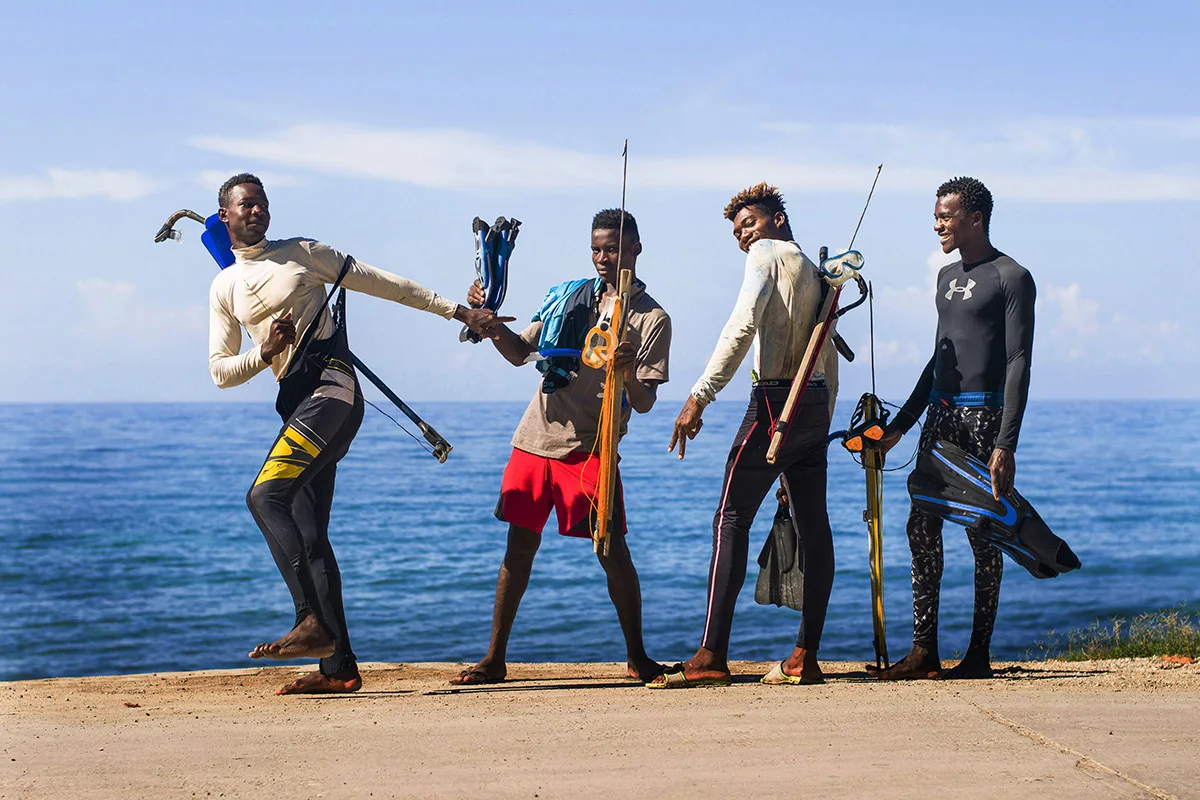
“When they’re not in school, and the waves aren’t too strong, these four friends can always be seen at this spot by the sea. This is where they meet to look at the ocean to see if it’s clear enough to fish. They always fish together, before selling their catch and bringing some of it home for their families. This is a typical sight in my neighborhood and something I always enjoy seeing.”

